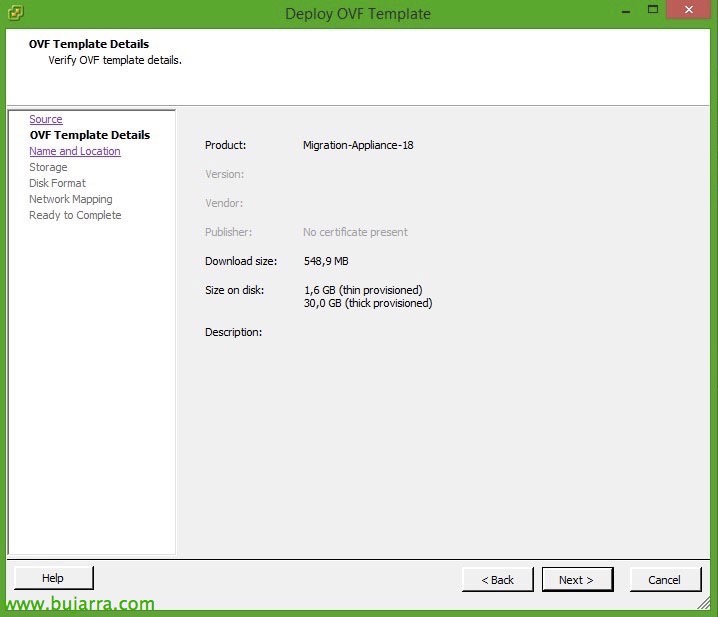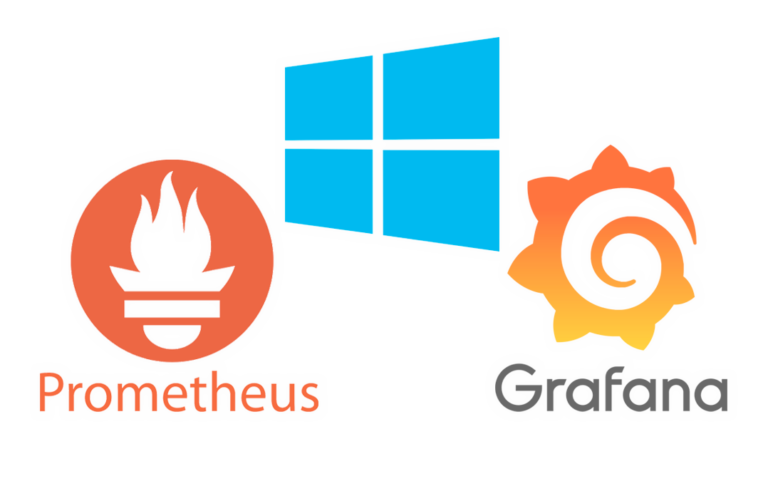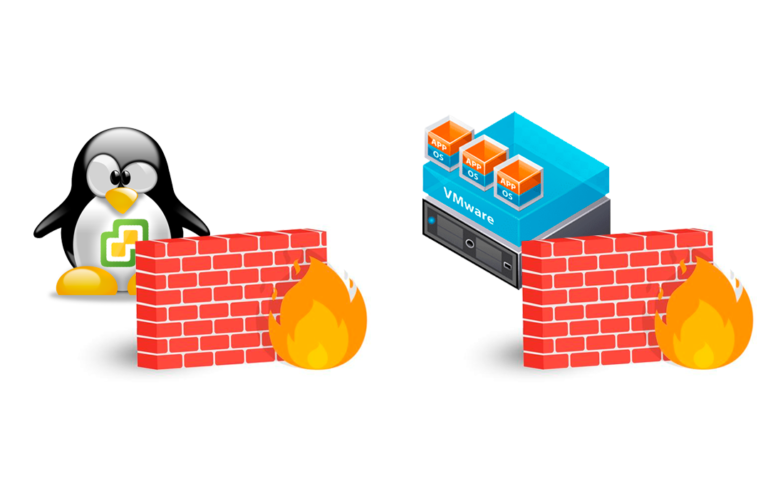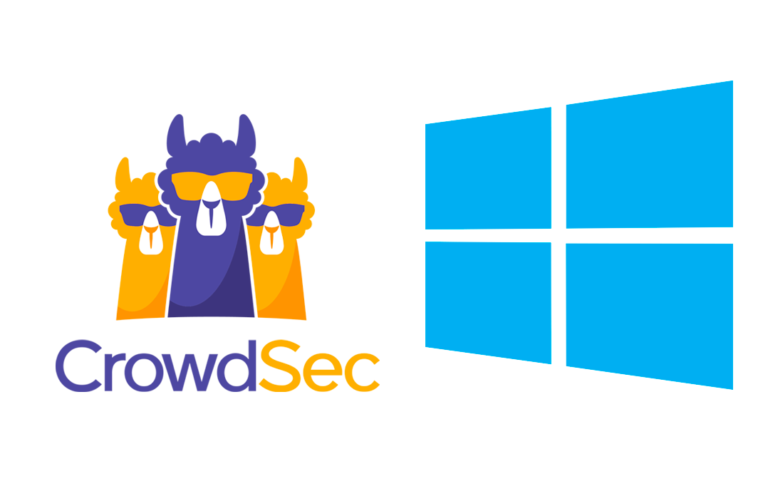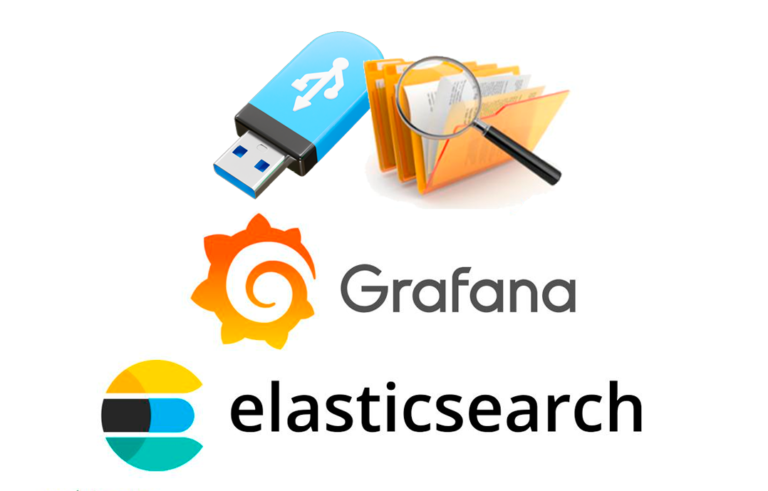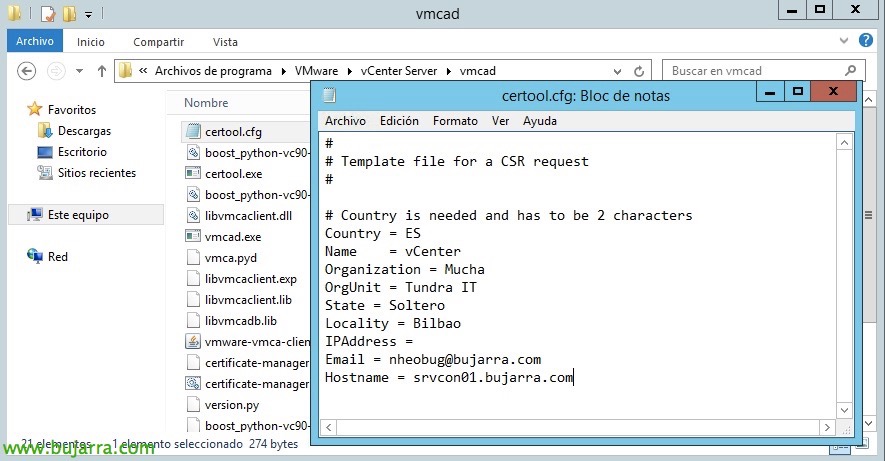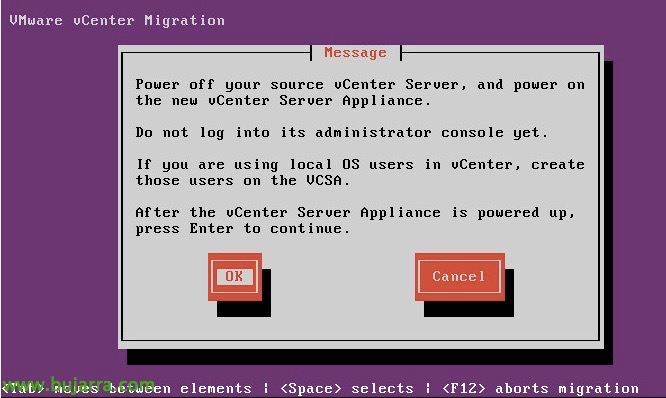
Migrating from vCenter Server to vCenter Server Appliance
With this great tool from VMware Labs, we will be able to migrate our vCenter server installed on Windows to the VMware vCenter Appliance linux appliance, will migrate the SQL Server database to vPostgres and all major services, interesting, isn't it? We will finally be able to easily migrate vCenter from Windos to Linux, with the savings that come with it on licenses!
Things to keep in mind:
- We will only be able to migrate vCenter Servers on Windows with a version 5.5 or higher.
- The SQL database must reside on an external SQL Server. However, we can always take the DB out of the local SQL and put it on an external SQL server temporarily for this migration, since one of the steps of the migration indicates where the DB resides.
- The vCenter Server and the vCenter Appliance must have the same version in order to migrate, as well as the same configuration of the number of vCPUs as vRAM.
- We must have all vCenter components on the same server (Inventory Service, vSphere Web Client and VMware Single Sign On).
- The SQL server must be 2008 R2 or higher for the vCenter DB.
- Roles will migrate to us, permissions, Privileges, Certificates and Inventory Service, watch out that it will not migrate the Plug-ins, so we would have to register them again, as well as SSO users/groups, that they do not migrate either.
- The migration appliance will need to connect to the vCenter server (443TCP, 445TCP), in addition to the DB server (VCDB) as well as the vCenter Server Appliance (22TCP and 443TCP).
- In the version 0.9, SQL Express is not supported, nor will it migrate users or alarm action scripts.
- vCenter service shutdown required migration process, Short downtime, but stop.
- Linked Mode is not supported, all vCenters must be migrated separately.
- vCSA is based on SUSE Linux Enterprise and from the 6 vSphere appliance: there is no difference in capacity between the Linux or Windows appliance.
GOOD, before starting will be to deploy the VMware vCenter Migration VM that we can download from the Labs de VMware, and we import it as an OVF in our infrastructure & We ripped it out!
When you start it, We will need to configure the network, it can be through DHCP or manual,
The first step without a doubt, will be to deploy the VMware vCenter Server Appliance (vCSA) in our virtual infrastructure, it must have the same version and build as the installation we already have of the VMware vCenter Server (vcs), we boot it and configure it only to have the same hostname as the vCenter Server and the same IP address, then we'll turn it off and take a snapshot of it. “OK”,
The second, will be to connect to the source server of vCenter Server, we will enter your IP/hostname and credentials from a Windows administrator (it doesn't have to be from vCenter). “OK”,
We'll check how you'll copy content from the vCenter Server…
GOOD, we must continue to turn off the vCenter Server and turn on the vCenter Server Appliance, it will now be time to create the users in the vCSA if we had them created in the vCS, “OK” to continue!
We rely on the vCSA SSH key with “Yes”,
Enter the root password for the vCenter Server Appliance, If we do not change it, it will be the default 'VMware', “OK”,
We enter the DNS lookup suffix of our network, “OK”,
We must go to the vCenter Server Appliance and configure it based on our needs, Then we'll come back here and click on “OK”.
After entering the VMware vCenter Server Appliance (https://DIRECCIÓN_IP:5480), in the 'vCenter Server' tab’ > 'Database’ We will indicate 'embedded’ and we'll record the changes.
In the 'SSO' tab, We will enter a password if we have not set it to the user ‘Ad***********@*****re.local‘, we will also indicate that the deployment of SSO is embedded as well. “Save Settings”,
In the 'Time' tab’ We will need to configure the time service, to pick up the time via an NTP server if possible from our network, and we record the changes!
In the 'Authentication' tab’ we will join the AD for validations if we had it configured, Click on “Save Settings” to save your changes.
GOOD, we confirm that everything is correct and we confirm that the services are started.
So we can already hit “OK” and continue with the migration,
“Yes”,
Now we must indicate the password of ‘Ad***********@*****re.local‘ of our vCSA & “OK”,
And we'll see how it restores certain configurations in the vCSA,
When you have the vCSA in your domain, we must configure if it is correct to use this same Active Directory to perform Single Sign On, “OK”,
We wait while you keep copying files, for services…
In this step we must connect against the SQL Server server that has our vCenter Server database, We will give all the connection data, BD name… and we press “OK”,
GOOD!! is already migrating our beloved SQL Server database to vPostgress!!! Let's wait!!
And nothing, We wait while vCenter services start completes the entire migration, Once done, we will check that everything is OK and we will be able to delete this VM and work from now on with a vCenter Server in linux thanks to its appliance!!!


